SRQ DAILY May 26, 2018

"We're very seasonal in Florida, but what many of us in our area have noticed, business is up, and the seasonality is not near the levels it used to be."


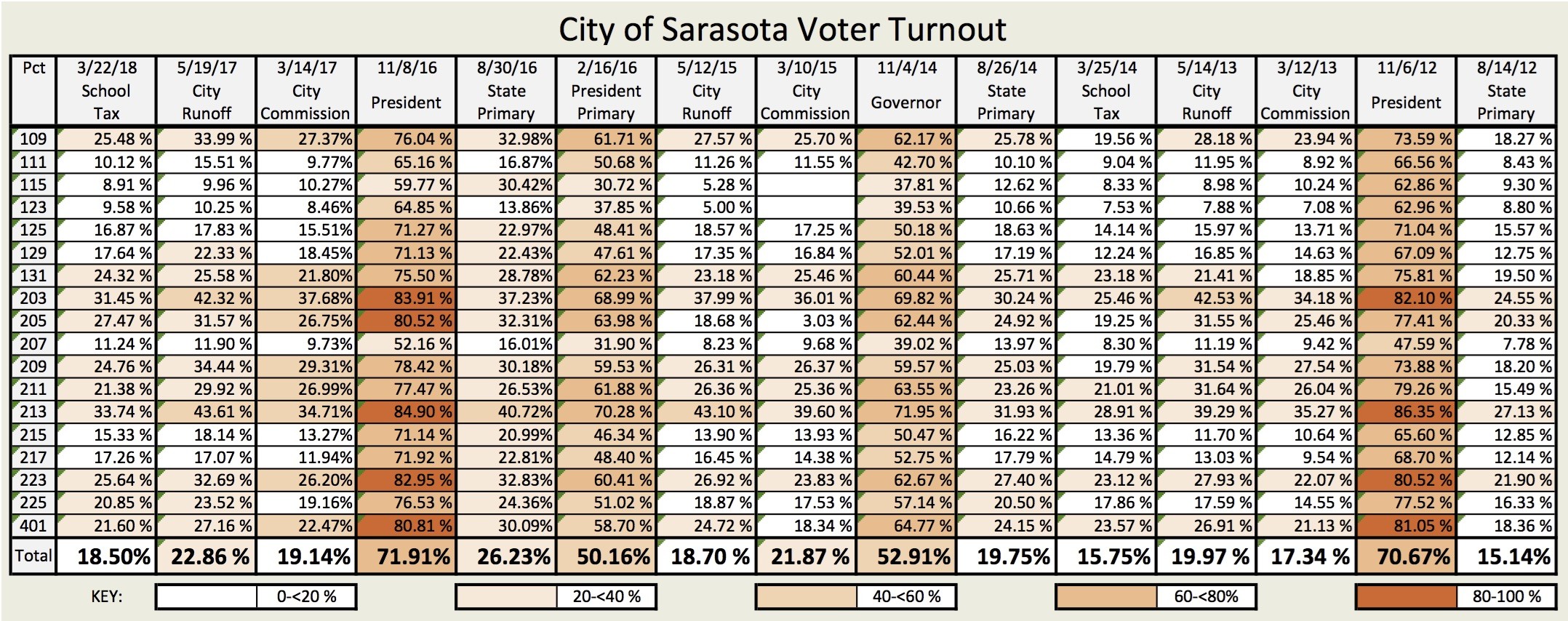

Since a Sarasota campaign gathered enough signatures to put the “Decide The Date” referendum on the November ballot, city voters soon will make a critical decision that could alter the dynamic of local elections. Frankly, it’s about time this contentious issue appeared as a referendum so the two sides can settle a long-time debate. We can expect each camp to offer emotional appeals about voter suppression and making it more expensive to run. But the core principle at stake boils down to one data point: Turnout.
I compiled precinct-by-precinct turnout for 15 elections in Sarasota over the past six years (precincts were redrawn and numbered in mid-2012 making an apples-to-apples comparison difficult any further back). I’ve included every election in which voters citywide could participate; the only exceptions are the City Commission election in 2015 when District 1 Commissioner Willie Shaw ran unopposed so a third of city voters had nothing to vote on in March and the last presidential primary that was open only to registered Republicans and Democrats. For this analysis, I’ve carved out only Sarasota city precincts and calculated turnout for that set of registered voters.
City commission races by themselves don’t drive turnout nearly as high as elections to decide president or governor, which I doubt shocks anyone. A City Commission runoff in 2017, for example, drew out a rather high percentage of voters by city standards, but turnout was still less than a third that of the presidential races in 2016 or 2012 and less than half that of the Florida gubernatorial election in 2014. That’s not to say the contest doesn’t inspire voters. Special elections held to extend a school tax in Sarasota County draw a lower turnout of voters, and charter amendments in May of 2015 drew miniscule turnout in city District 1.
Parts of the city experience a greater voter disparity than others. Anyone wondering why the NAACP endorsed moving the election need look no further than turnout in the Newtown precincts, 115 and 123. City elections typically drag out 10 percent of voters or less in these areas, but presidential elections draw upward of 60 percent of Newtown voters, and the gubernatorial contest four years ago inspired around 40 percent to cast ballots. Participation in Newtown may never approach that of affluent voters on Bird Key, whose Precinct 213 usually produces the highest turnout anywhere in the city, but the disparity proves greater the lower profile an election.
Yet, there’s also important information that undercuts some of Decide the Date’s hopes, notably in August elections. While the cry of “moving elections to November” will likely emblazon much of the campaign’s literature, this referendum would move city commission races to coincide with the state primary anytime more than two candidates qualify. Historically, that happens most of the time. Runoffs in those cases will be held in November.
But voters in Sarasota don’t turn out in the same numbers for August contests. In fact, fewer voters came out for the primary election than the peak city election in two of the last three election cycles. Why? I presume it’s because the most high-profile contests are usually primaries for governor or senator, where only voters registered for the appropriate party can vote, even though there have been races every cycle for school board and judge open to all Sarasota County voters. City elections would not have a party requirement either, but will face the same obstacles as other nonpartisan races as far as voter education.
To me, potential for higher turnout in city elections conquers all counterpoints, but this question becomes more complicated the more data gets explored. Fortunately, voters have a specific question in front of them this fall, and lots of time to dig into numbers.
Jacob Ogles is contributing senior editor for SRQ Media Group. 


Prior to becoming president of Ringling College of Art and Design, I served for several years as the founding executive director and CEO of the Rock and Roll Hall of Fame and Museum in Cleveland. So, I can’t help but think of the old Alice Cooper song “School’s Out” when the month of June rolls around. But while Alice sings about “no more pencils,” “no more books,” here at Ringling College we’re rocking to a different tune: “School’s in!” We’re offering lots of wonderful classes and activities for lively and curious minds of all ages and abilities.
We always do. As in the past, this summer we’re offering an extensive PreCollege program for students thinking about attending an art and design school and who want to know if that’s the right career path for them. More than 200 students from thirty-one states and Puerto Rico and eight countries outside the U.S have already signed up for the program.
The majority of PreCollege students absolutely love it; yet a few may decide it’s not the path for them and set out in new directions. The benefits are huge either way. Because they’ve attended PreCollege at Ringling they’ll know themselves better; they’ll have had the opportunity to study with faculty and professionals at the top of their field; they’ll cultivate useful skills and knowledge and increase their eligibility for college admissions and scholarships; and they’ll see firsthand how hard artists, designers, creative writers and arts entrepreneurs work every day in order to excel in their profession. At the end of the PreCollege program, 10 students will be awarded scholarships for outstanding academic achievement and two for student life leadership. The amount of each scholarship is $5,000 and goes toward the first year costs of attending Ringling College. Whether students decide to attend Ringling or not, they’ll still have made lasting friendships with others who share their passion for the arts and gained deep insight into the expanding world of creative careers.
We also have a comprehensive Summer Studios program that offers tweens, teens and adults the opportunity to investigate both established and new art and design techniques and to develop their own unique style and critical thinking skills. Students age 11 and up will be inspired, challenged and encouraged by the all the fun and informative classes offered by our outstanding instructors in drawing, printmaking, Photoshop, Illustrator, filmmaking, photography, illustration, animation, game art, portfolio, sculpture, painting and watercolor. Students in the Summer Studios program can learn traditional and digital art techniques, create stories in creative writing or in film, photo or video classes and are given lots of time to work in the studio. They can take just one class or focus on a series to earn a certificate.
Summer Studios are integral to the College’s continuing studies mission to provide educational and professional development opportunities for multigenerational audiences and to support the academic mission of the College through innovative programming serving current and future students, the public and professionals from multiple fields.
Last but not least, we’re offering an exciting new workshop in glass this summer in our recently opened (and spectacular) Basch Visual Arts Center. The first workshop in early July filled up quickly, so we’ve added another starting mid-July. In these beginner-level workshops students learn a variety of techniques for working with molten glass and making both blown vessels and solid sculptures in our hot shoppe.
The spirit of Alice Cooper’s “School’s Out” might be taking hold in other places, but at Ringling College we’re looking forward to welcoming a new wave of students to campus this summer as we keep up the quickening pace on our path to preeminence among art and design schools worldwide. By all means, take some time this summer just to play or even do nothing! But don’t forget you can find the word “create” at the heart of recreation, and the best creative classes and workshops in the region can be found right here in Ringling College’s summer programs. Don’t miss out on that special magic that happens on campus from June through August.
Dr. Larry R. Thompson is president of Ringling College of Art and Design 

I never used a résumé to get a job because I started as a bus boy in a seafood restaurant on Anna Maria Island in Manatee County during summer break from college. I stayed with that small independent business and helped the owner open five more restaurants. I became a server, assistant to the assistant’s assistant, general manager, area manager, then opened my own restaurant, an 85-seat oyster bar on the Anna Maria City Pier. Twenty-one years later, I have four restaurants in Manatee County with 333 employees; 300 are hourly employees with an annual payroll of $2.5 million in the past 12 months, and 33 managers who earned $1.5 million in salary and bonus. We serve between 700 to 1,000 guests at each location every day.
Every industry thinks theirs is the most important industry in the country, but ours actually is! One out of three Americans got their fist job in the hospitality industry. Many people believe that it is only an entry level job, but in Florida alone, the hospitality industry is the largest in the state and we collect and remit more sales taxes to Tallahassee than any other industry. Of my 300 hourly staff members, no one is paid minimum wage. My 300 range from: 113 between $10 and $12.50; 39 between $12.50 and $15; 40 between $15 and $20; and 64 over $20 (most of these are bartenders and servers earning $20-$30 per hour in tips). And 47-48 percent of our hourly staff earn over $15 dollars per hour. In the last 12 months, FICA payments at our four stores was $552,544. Matched with the employees’ payments, that’s over $1.1 million our small businesses contributed in FICA taxes.
Small businesses are big businesses. I met with my CPA after tax season this year when he brought me my returns. What he explained to me was one of the parts of the new Tax Cut and Jobs Act where I get a 20 percent Business Income Deduction this year. He showed me what my taxes were in ’17 and if the new code were in effect what they would have been. I’ve already planned 2018, plugging my adjusted gross income for this year with the 20-percent deduction. We’ve been very consistent in our stores over the last 10 years as far as bottom lines go.
So what do I do with the 20-percent reduction that the new Tax Cuts and Jobs Act will provide? There are so many options, one I’ve already taken. Back in April after I met with my accountant, I bonused $60,000 to some of my staff. I purchased two new two-sided LED signs at $20,000 each for two of my locations to attract new customers. I heard my accountant say we’d probably realize $100,000 in savings/benefits from the new plan.
Speaking of reinvesting in our businesses, which we all have to do to remain viable in our industry, we do need Congress to fix an alleged scrivener’s error when the new code was passed. It reverted depreciation for restaurants back to 39 years; it was at 15 years due to the excessive wear and tear on restaurants due to the volume of guests and equipment upgrades necessary. We need to get the depreciation back to 15 years so we can keep investing our dollars back into the businesses.
We’re very seasonal in Florida, but what many of us in our area have noticed, business is up, and the seasonality is not near the levels it used to be. Our guest counts are up, people are eating out more. Many of my fellow restaurateurs in our local Restaurant Association are raving.
The most important thing the new tax plan does is it helps small businesses stay in business and continue employing 333 people livable wages and helping our communities.
John Horne, owner and president of Anna Maria Oyster Bars, provided testimony to the U.S. House Ways & Means Tax Policy Subcommittee on May 23. 

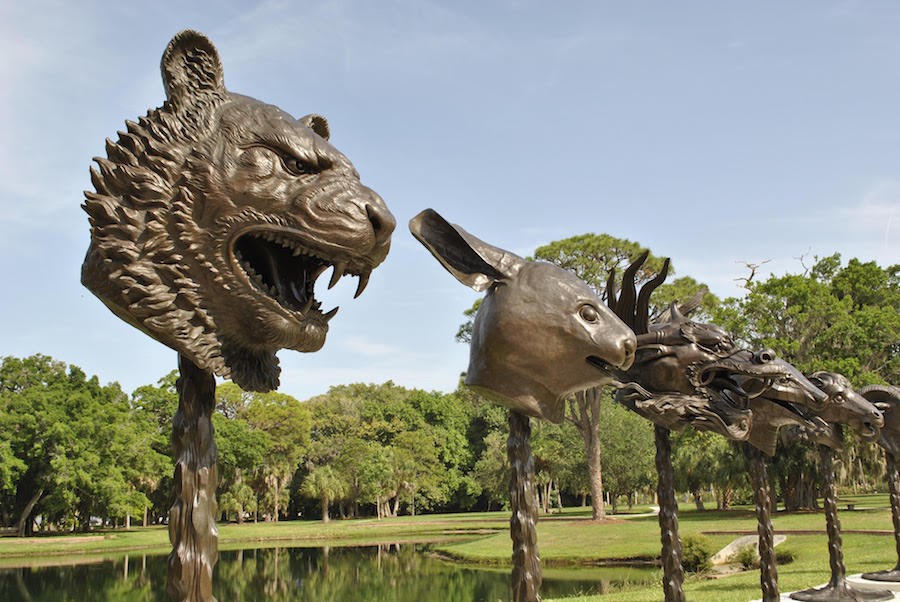
The Ringling Museum of Art is currently exhibiting twelve bronze sculptures named the Circle of Animals/Zodiac Heads by Chinese artist Ai Weiwei. The sculptures were inspired by the fountain-clock of Yuanming Yuan, an eighteenth-century fountain that featured animals of the Chinese zodiac. The sculptures have been on display across the globe since their official unveiling in 2011, making them one of the most viewed sculpture projects in the history of contemporary art. They will be on display through June 1. The Ringling grounds are free and open to the public. 

Florida students that are between the ages of 8-18 and play violin, viola, cello or bass are invited to audition for a position in the Perlman Music Program String Orchestra as a Super String Participant. Last year, 54 string students from fourteen counties around Florida participated. The program aims to promote the interaction of budding musicians with international students from the Perlman Music Program and their world-class faculty. The application is due by August 20 and auditions are free for all performers. 
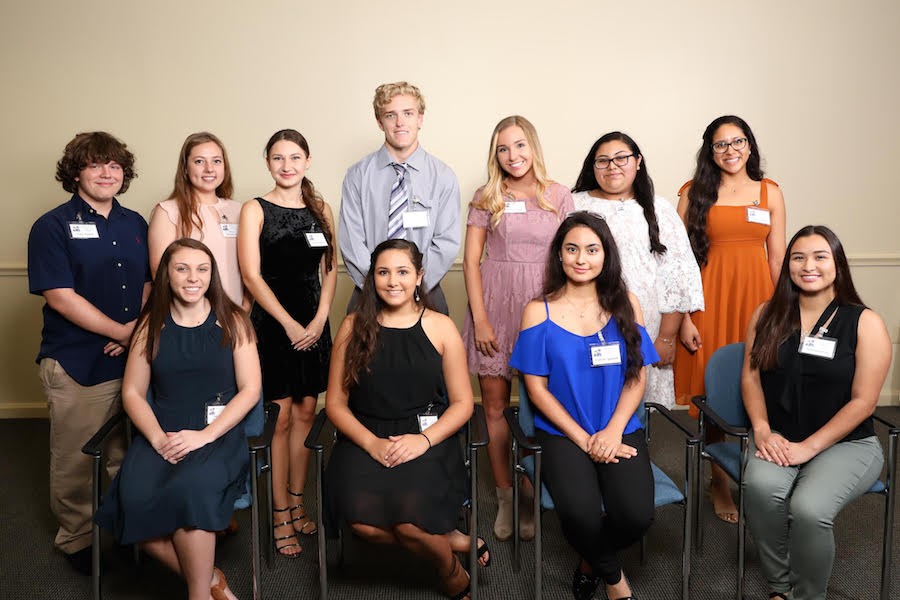
Doctors Hospital of Sarasota awarded eleven local high school students with more than $40,000 in scholarships. Every year, the volunteer auxiliary at Doctors Hospital awards scholarships to students who are interested in pursuing a career in healthcare. The fund was created in 1967, and since its inception, the group has awarded more than one million dollars in scholarship funds to local students. The money is raised through sales at the hospital gift shop, fundraising and generous donations. The scholarships were awarded to students from North Port High School, Suncoast Polytechnical, Riverview, Pine View, Sarasota Military Academy and Venice High School. 
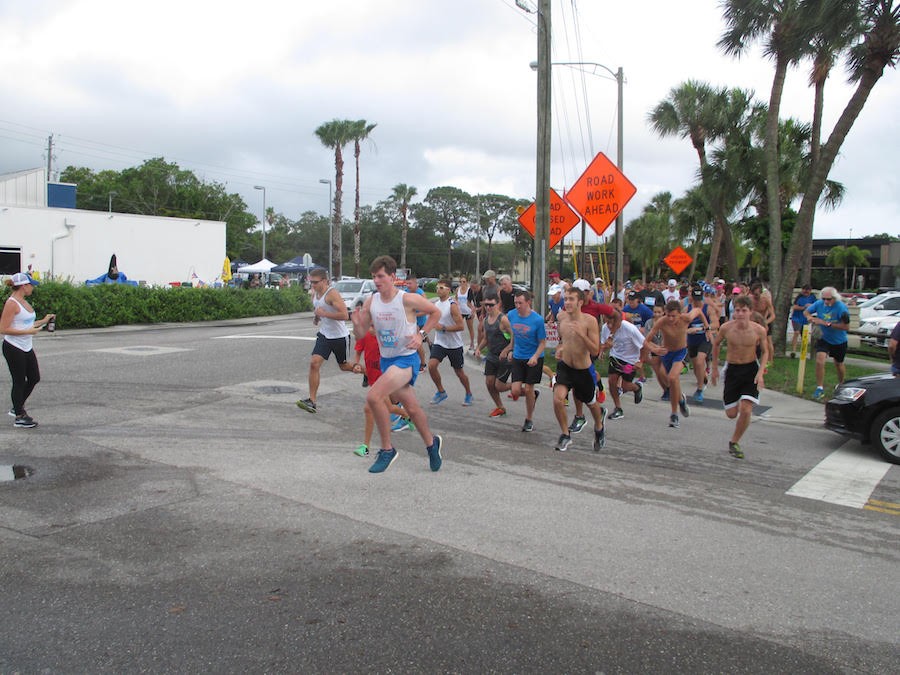
Fleet Feet Sports Sarasota will celebrate Global Running Day on June 6 by hosting the 2nd Annual Big Run 5K Event. The event is part of a nationwide 5K Big Run celebration organized by Fleet Feet Sports, with over 70 stores participating across the country. In 2017, the event drew more than 12,000 participants of all levels and abilities. The race will be followed by a post-race party with food, beer, soft drinks and drawing for prizes. 
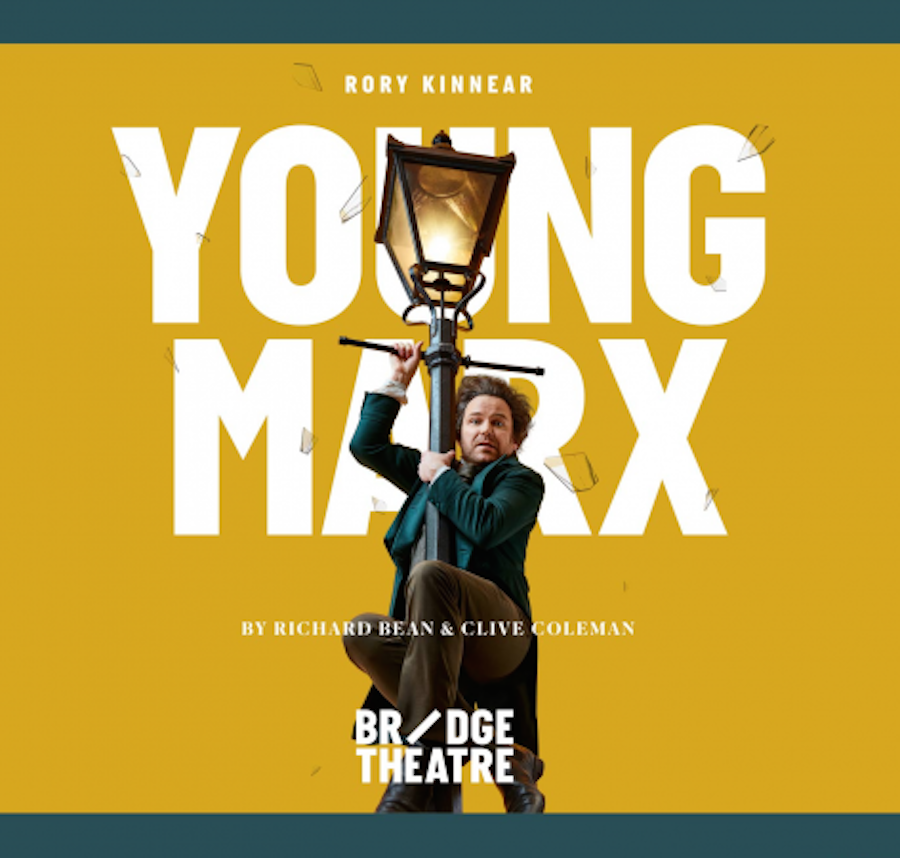
On May 25 and 26, the Historic Asolo Repertory Theatre is providing screenings of The Young Marx and the Royal Ballet Live Cinema Manon. Broadcasted live from The Bridge Theatre in London, The Young Marx is a comedy set in 1850 that follows Europe’s most feared terrorist as he struggles to dodge creditors, spies and dangerous rivals. Manon follows Kenneth MacMillan’s powerful telling of tragic love based on the eighteenth century French novel. Tickets are $20 for non-members. 
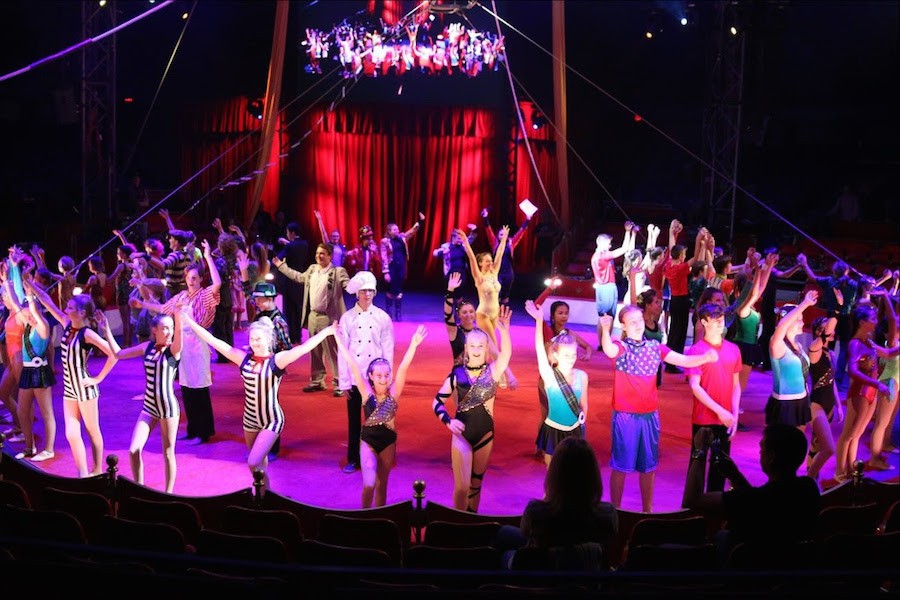
If you’re looking for indoor summer activity that will captivate children and adults alike, the Circus Arts Conservatory has you covered. Beginning on June 2, the Historic Asolo theatre will host the Annual Summer Circus Spectacula with performances including a hand-balancing act by the Argentinian-Cuban Duo Fusion, an aerial routine by Sailor Circus coach Olga Coronas, and entertainment from ringmaster and magician Gary Roberts. Book tickets online or via the Ringling box office. 

SRQ DAILY is produced by SRQ | The Magazine. Note: The views and opinions expressed in the Saturday Perspectives Edition and in the Letters department of SRQ DAILY are those of the author(s) and do not imply endorsement by SRQ Media. Senior Editor Jacob Ogles edits the Saturday Perspective Edition, Letters and Guest Contributor columns.In the CocoTele department, SRQ DAILY is providing excerpts from news releases as a public service. Reference to any specific product or entity does not constitute an endorsement or recommendation by SRQ DAILY. The views expressed by individuals are their own and their appearance in this section does not imply an endorsement of them or any entity they represent. For rates on SRQ DAILY banner advertising and sponsored content opportunities, please contact Ashley Ryan Cannon at 941-365-7702 x211 or via email |
Powered by Sarasota Web Design | Unsubscribe











